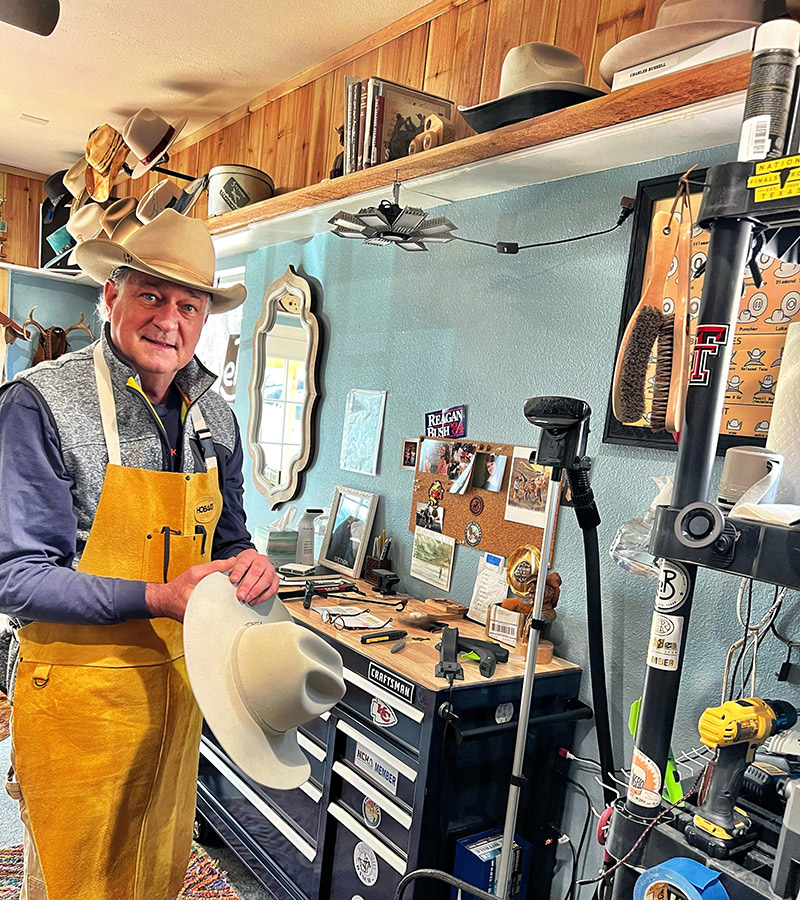
For many, the worlds of creativity and banking do not often intersect. However, Eddie Broussard sees things a little differently.
"For the most part, if you don't look deep within banking, you might not see creativity, but it's there," said Broussard. "As I'm structuring the loan or working with a client, I can really get creative. The more I understand the client's needs, the more I can customize the solution for those needs."
Broussard is a 1984 finance graduate from the Jerry S. Rawls College of Business and believes that creativity is a core part of each person.
"I really believe that we all have a creativity piece inside of us," said Broussard. "It's really pretty cool when you find out what that is."
While Broussard's day job is president of the Fort Worth Texas Market at UMB Bank, his passion project is designing custom hats as seen on his website, ebroussard.com.
"It's not a hat business that's trying to make money; it's a creative pursuit with a purpose that's very personal to each buyer," said Broussard. "I don't want to make money with my hats. I want to make hats that are special to the person wearing them."
Broussard recognized his own creative side as a young boy. He would spend hours putting together models and working on his drawing abilities. In fact, he even took a drafting course in high school and entered Texas Tech University as an architecture student.
Broussard's original plan was to dual major in civil engineering and architecture. However, as the poet Robert Burns wrote in the 1700s, "The best-laid plans of mice and men often go awry."
Abandoning Creativity
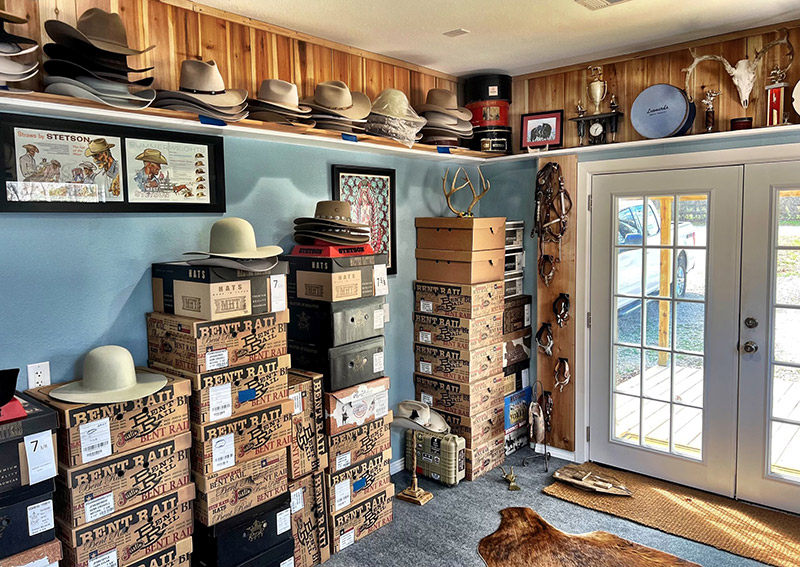
"I didn't want to graduate and draw doors or windows for some architecture firm in Dallas," said Broussard. "I determined that wasn't the path I thought it was."
Broussard took a moment to reflect on his interests and skillset and realized he really enjoyed working with numbers and people. Finance and banking seemed like the most logical paths, but Broussard still had some reservations. In some ways, Broussard felt like he was abandoning his creative side.
"Because I dropped out of architecture, the move to finance kind of squashed my creativity," said Broussard. "Architecture wasn't what I thought it was, and I had the misconception that I would have to be an analytical businessperson. I'm not going to be able to be creative."
And while Broussard felt he may have been letting go of his creative side, he felt confident with his decision to move into banking.
"While I was really good with numbers, I enjoyed interacting with people too," said Broussard. "To me, banking was the best of both worlds where you had to understand numbers and ratios, but there was a social piece to it as well."
After graduating, Broussard took a job with Texas American Bank in Fort Worth and stayed in the banking industry for around 12 years.
He eventually moved away from banking into corporate governance, becoming the CFO and COO of a couple of companies. One of those companies sent Broussard and his wife to Hickory, North Carolina, which is where he would rediscover his creativity.
Rediscovering Creativity
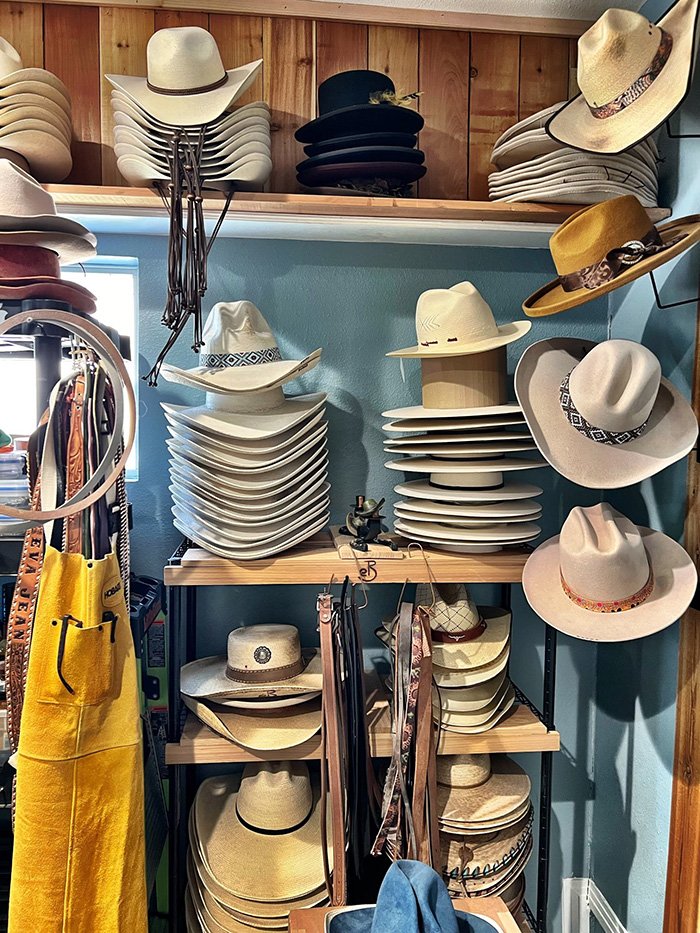
Broussard and the executive director took a trip to Durham, North Carolina, to see a social enterprise where an organization accepted corporate donations. Rather than just taking standard items like clothes or shoes, this enterprise resold items like broken furniture for community art projects. Items were organized in the warehouse, not by function or purpose, but by the materials they were made from.
Walking around the warehouse, Broussard overheard a teacher giving a lesson to her students.
"They were talking about reusing materials and how you upcycle something," said Broussard. "You basically take something that had one purpose and use it for something new. Instead of just recycling, you make art out of it."
Broussard started to feel his creative pull and worked to establish a similar enterprise within the nonprofit he volunteered with. He began calling local corporations, asking for any materials they planned to throw away.
Broussard also wanted to connect with local artists and helped establish an upcycle gallery within the nonprofit. He wanted to showcase artistic pieces made primarily from the organization's donations.
"This creative process helped show the women in the program that you can take something broken and give it new life," said Broussard.
Broussard's creativity only intensified, and he soon found himself and his wife making their own pieces from donated materials.
Broussard and his family realized they missed Texas and returned to Fort Worth in 2013. Broussard re-entered the banking industry after being out of it for 17 years and continued his artistic work on the side.
As Broussard continued to gain more experience working with mixed materials, he started to repair old furniture. It was not long before he found his preferred materials: hats.
Designing Creativity
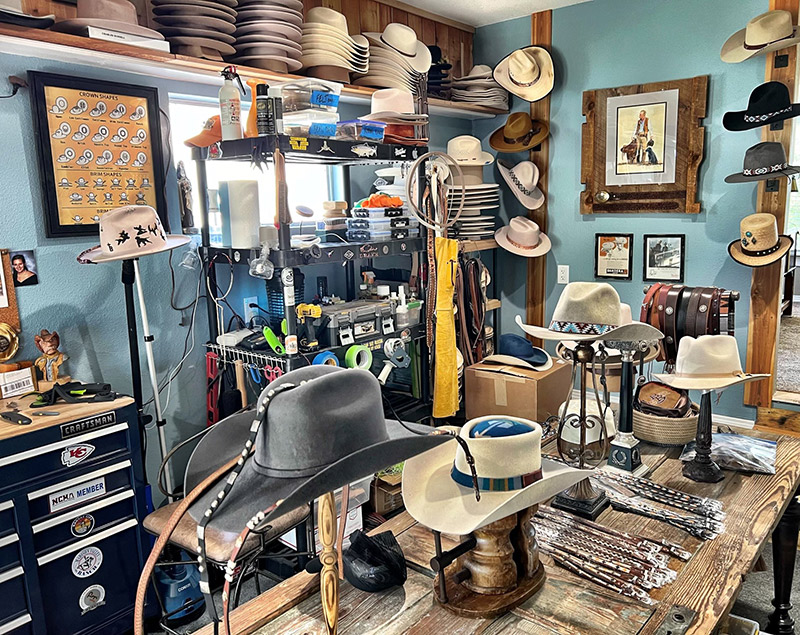
"I thought that's crazy. I could do that."
Broussard had amassed a hat collection largely due to his grandfather.
"When I graduated college, my grandfather gave me one of his hats," said Broussard, "and I realized a hat is a cool thing to be passed down within the family. This was him. He wore this hat; his sweat was in it. I had a piece of my grandfather for the rest of my life. I thought that was really special."
Broussard took a few hats from his collection and started getting to work.
"I cut them, sewed them back together, burned them, and put them on my Instagram account," he said. "About 15 people in two days asked where I got the hats and asked me to make them one."
From there, Broussard's passion started to grow; however, he always kept a personal and unique vision in mind with his projects.
"My focus is not to do a lot of hats for the inventory of a giant retailer," he said. "My focus is to create a hat that is specific to the person who wants it and is very much who they are."
While this may mean Broussard is intentionally keeping his endeavor from being traditionally successful, he finds his greatest reward in the emotional impact his hats create for his clients.
He recently designed a hat for a close friend who did the play-by-play for Texas Christian University's football and basketball teams.
"He saw my Instagram page and said he had a fedora from his uncle," said Broussard. "He asked me to clean it up and get creative with it. When I get a vintage hat, I try to leave it alone as much as I can. A good vintage hat is as cool as it gets."
But Broussard still added his personalized flair to it, adding a purple ribbon to represent TCU and a vintage TCU press pass to the hat band.
"I ran across a press pass for the 1966 TCU and Ohio State game," said Broussard. "It was like the old days when the press guys wore their passes tucked into their hat bands. When my friend took the hat out of the box, he literally started crying."
Broussard sees his hat designs as a way to express his creativity and preserve something intrinsic about an individual - something that can affect a person the same way Broussard was affected by his grandfather's hat.
"A hat used to define what a man did or who they were," said Broussard. "For my grandfather, that was his hat. It signified who he was. You don't realize a hat can do that. I want to preserve the legacy and history of a person's family through a hat."
Creativity. Built on Rawls.
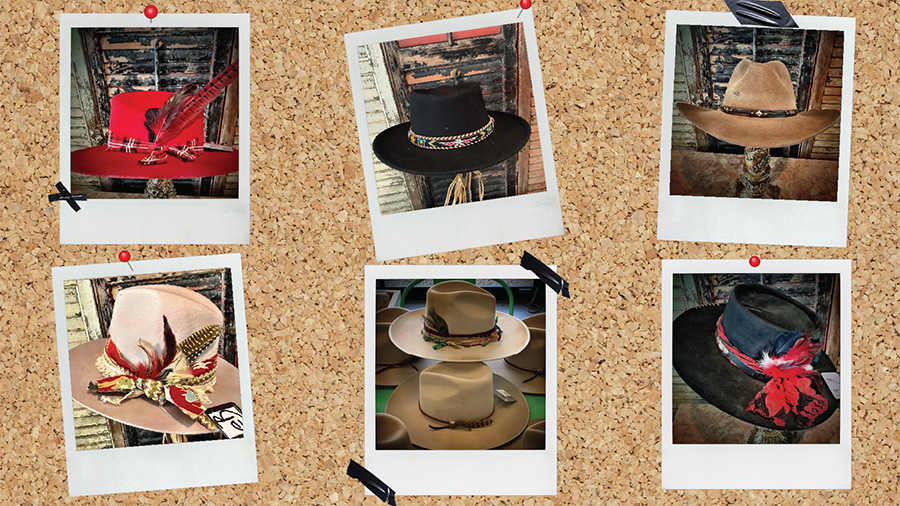
"It's subtle, but there are ways you can use creativity in banking, even though it's normally seen as a non-creative environment," said Broussard. "Creativity can be used in problem-solving and in unique ideas that can drive the company's success."
Broussard credits Rawls College with building a foundation for him to best utilize his creativity in the banking world.
"Rawls does a good job regardless of your major," he said. "You get a broad base and a solid foundation in all facets of business."
Broussard hopes future and current Rawls College students embrace their creative sides as they think about their own careers.
"Look for creativity in your own life. Most people will say they're not creative, but they are. They just haven't found their avenue yet. The rewards and satisfaction you get when you find it will be unlike anything else. It may not be the traditional creative arenas we all know, but I know they have it in them."
